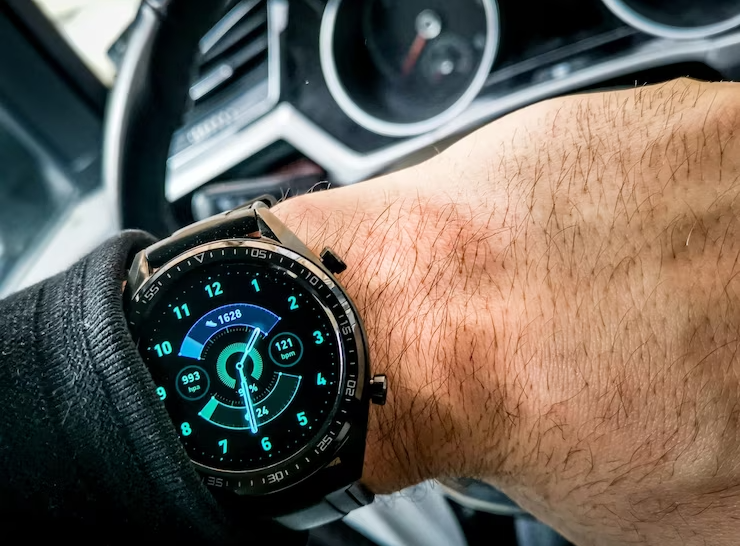The field of horology places a specific value on automatic timepieces. These mechanical marvels blend exquisite handiwork with the ease of self-winding technology.
We will delve into the intriguing world of automatic watches in this blog article, learning about what is an automatic watch, what type of watch they are, how they function, the significance of their movement, how to care for them, and more. Join us as we explore the enigmas at the heart of automatic watches’ captivating charm.
The Enchanting Beauty of Automatic Watches
Talking about automatic timepieces is only possible by bringing up their alluring appearance. Every component of an automatic watch accuracy is expertly constructed, down to the minute details on the dial and the beautiful sweep of the hands. The glass case back displays the complicated gears and oscillating rotor in motion, giving viewers a glimpse of the mesmerizing movement. The balancing wheel’s rhythmic beat and the components’ exact alignment produce a symphony of accuracy and elegance.
Additionally, automatic timepieces have a classic appeal that defies fashion trends. They give off a feeling of tradition and heritage that ties us to the long history of watchmaking. Automatic watches are available in various designs, from the traditional dress watch to the athletic diver’s watch.
Automatic watches have a certain ancestral quality that extends beyond their aesthetic appeal. These watches are treasured family heirlooms that are passed down from one generation to the next. Automatic alerts may endure the test of time and maintain their worth because of their durability and superb craftsmanship.
How Does an Automatic Watch Work?
If we define automatic watch, it’s usually called self-winding watches, run on mechanical movement principles. In contrast to quartz watches, automatic watches are powered by the wearer’s wrist movement. A rotor, a semicircular metal weight, rotates freely inside the watch when the wrist moves. The mainspring is gradually wound up due to the energy produced by this rotation being transmitted to it. The mainspring’s energy reserve powers the watch’s movement, ensuring its precision and usability.
Understanding Automatic Watch Movement
An automatic watch’s movement, also known as its caliber, is the internal mechanism that powers the watch’s hands and complexities. The Swiss-made ETA and Japanese-made Miyota movements are commonly used in automatic watches. These movements comprise complex gears, springs, and other parts that provide accurate timekeeping. The movement’s quality and accuracy significantly influence the accuracy and durability of the watch.
Winding an Automatic Watch
An automated watch’s capacity to wind is one distinctive characteristic. When worn frequently, the watch can be incorporated into your wrist’s natural movement. However, your automatic watch can only work if you wear it sparingly. In such circumstances, the movement must be manually wound to get going. Turn the watch’s crown 30 to 40 times clockwise to ensure the mainspring is completely coiled. This action provides the initial energy required for the watch to start working.
Automatic vs Mechanical Watch: What’s the Difference?
Mechanical movement powers the mechanical watch category, including automatic watches. Not all mechanical watches, though, are automated. The way they are coiled makes a significant distinction between Automatic vs. Mechanical Watches. While mechanical watches require manual winding by rotating the crown, automatic watches wind themselves through the movement of the wearer’s wrist. Although both types include exquisite craftsmanship and accurate timekeeping, automatic watches offer the ease of self-winding.
Do Automatic Watches Need a Battery?
Automatic watches don’t require batteries, unlike quartz watches that do so to power their movements. As long as the watch is worn frequently, the self-winding mechanism ensures it will continue functioning. However, if an automatic watch is not worn for a long time, it may stop working and must be manually wound to get it moving again. Automatic watches have this built-in feature, which prevents the need for battery replacements and guarantees the durability of the automatic wristwatch.
How long does an automatic watch last
Automatic timepieces are renowned for their lifespan and robustness. An automated watch can live for countless generations with proper maintenance. Much like any mechanical clock, it needs maintenance to guarantee optimal performance. Every three to five years, it is advised to do periodic servicing, which involves cleaning, lubricating, and regulating the movement. Avoiding shock and extremely hot or cold temperatures will extend the watch’s life.
Read More about Watches Here :
Conclusion
The ideal synthesis of fine craftsmanship, mechanical ingenuity, and eternal elegance is embodied by automatic watches. Thanks to their self-winding capabilities and sophisticated mechanisms, these watches have mesmerized watch enthusiasts for years.
An automatic watch is more than just a timepiece, whether a Swiss marvel or a Japanese masterpiece. It is a sign of refinement and a testament to the creativity of horology. Accept the appeal of automatic timepieces and set out on a time-traveling adventure propelled by your rhythmic wrist movement.
